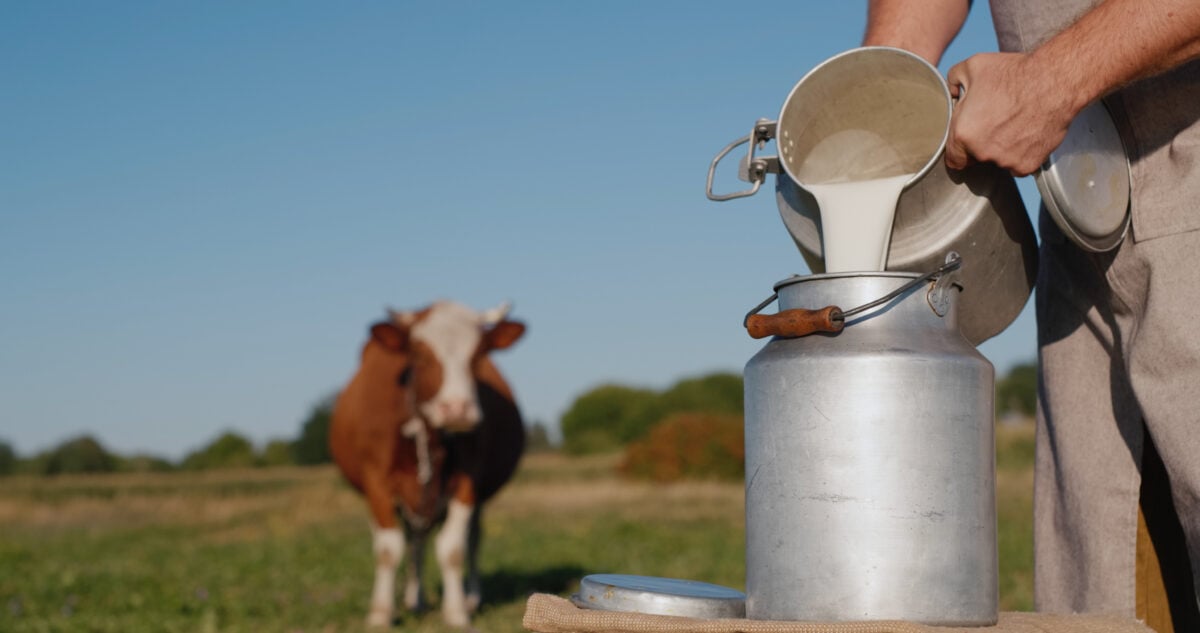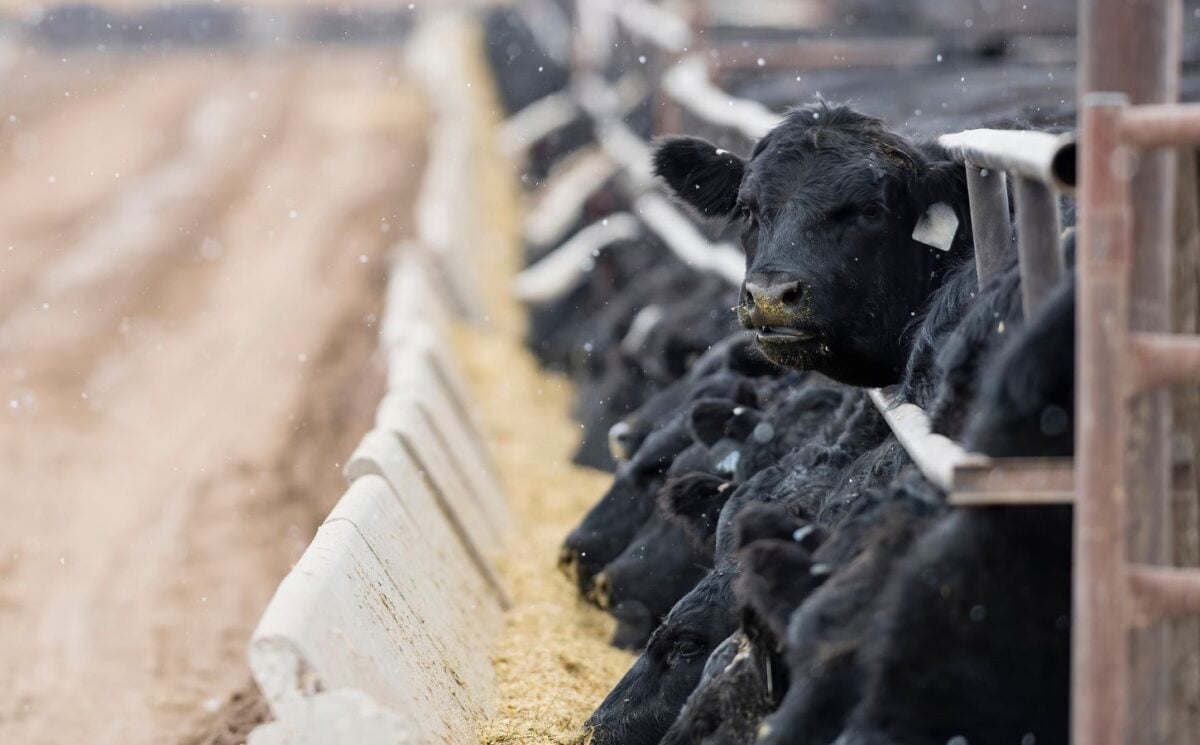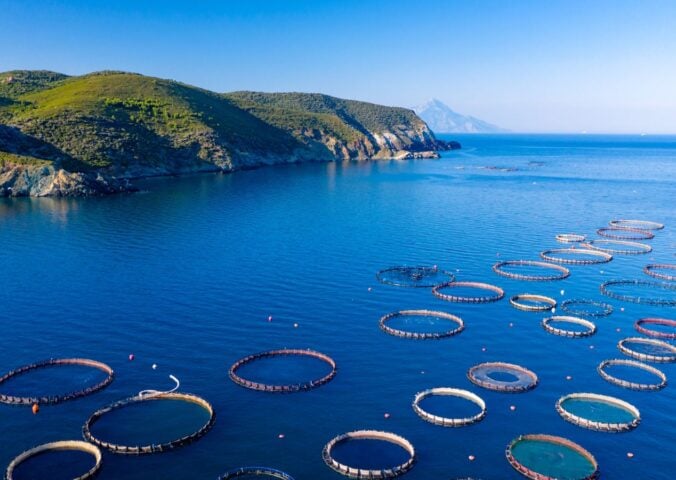A multi-state bird flu outbreak in dairy cows is currently in progress in the US.
This is, notably, the first time HPAI A(H5N1), a strain of avian influenza – or bird flu – has been found in cattle. Furthermore, the Centers for Disease Control and Prevention (CDC) confirmed one human infection, an agricultural worker in Texas.
Read more: Government ‘Failings’ Leave UK Vulnerable To Animal Disease Outbreak, Report Warns
The CDC is now monitoring over 100 people (mostly other agricultural workers) for signs of infection. While human cases of avian influenza A viruses do occur occasionally, they are extremely rare, and this marks the second-ever recorded H5N1 infection in the US.
The CDC’s risk assessment for the general public remains low, but due to a high mortality rate of around 50 percent and the strong likelihood of another zoonotic pandemic, global health officials are still preparing for a scenario in which the flu spreads to more humans.
“We’ve been investing in a library of antigens to move out as quickly as possible should we begin to see a highly transmissible flu strain circulate,” Dawn O’Connell, assistant secretary for preparedness and response at the Department of Health and Human Services, told NBC.
Two possible bird flu vaccines could be made available very quickly, if necessary, and the government says it could hypothetically ship out “hundreds of thousands” of doses in just a few weeks. However, officials also said that there are still no signs of mutation in the virus that would indicate it was becoming more transmissible.
Read more: People Fail To Recognize Factory Farming’s Link To Zoonotic Diseases – Despite Overwhelming Evidence
The spread of bird flu among cows

A global outbreak of H5N1 amongst birds began in 2020 and is now widespread, and experts believe that the infection of cattle likely began with a single wild bird interaction.
Avian flu impacted over 50 million European birds (both wild and farmed) between 2021 and 2022 alone. Its presence in cattle was first reported on March 25, 2024, though experts now believe the jump from birds to cows may have begun as early as December 2023.
Milk is believed to be the primary vector for transmission between cows rather than the respiratory infection associated with typical flu. Some experts have said that it may be spreading via milking machines or rodents and people moving between equipment, though we don’t know for sure. The US Food and Drug Administration (FDA) has warned against human consumption of unpasteurized milk.
The federal government has also officially ordered that farmers moving dairy cows between states must now test all cattle, not just those with symptoms. The update comes shortly after the testing of pasteurized milk from supermarkets found genetic traces of the virus. (Note: this does not necessarily indicate the presence of live virus in pasteurized milk.)
The FDA has repeatedly said that infection via pasteurized milk is of “no concern.” Still, researchers and veterinarians on the front lines of the outbreak say the government has taken too long to share hard data on viral changes and milk safety in general.
Read more: Wildlife Trade Is ‘Key Risk Factor’ Behind Global Spread Of Disease, Study Finds
Why it matters that bird flu has spread to mammals
Cows are not the only non-avian animals to catch the virus. Half of a Texas dairy farm’s resident cats died after consuming unpasteurized dairy milk from infected cows, and experts have also detected H5N1 in wild animals such as bobcats, raccoons, foxes, and skunks. (Previously, the virus has been known to spread to farmed mink, sea lions, and dolphins.)
This transmission from birds to mammals is significant as it increases the risk that the virus could adapt further to spread more easily between animals and humans, or from human to human via those people working closely with farm animals.
However, the spread of H5N1 to hog farms would be of particular concern, as pigs have cellular similarities to humans which them particularly susceptible to human viruses. If infected, the bird flu virus could potentially mutate in pigs to become more easily transmissible to humans.
There is also some confusion over exactly how the virus is spreading. For example, whether some cattle are infected but asymptomatic, or even whether cows have spread the flu back to poultry. One possible factor is the lack of biosecurity surrounding animal waste on farms.
American cattle are frequently fed something known as “poultry litter,” the leftover feathers, feces, dropped food, and anything else pulled off the floors in industrial poultry farms. The practice has been illegal in the EU and UK since the BSE (“mad cow disease”) outbreak in the 1990s, but continues across the US, something that experts note could be a factor for H5N1.
USDA is focused on ‘protecting’ the meat and dairy industry

Speaking to Bovine Vet Online late last month, cattle veterinarian Dr Barb Petersen said “Every dairy that I’ve worked with has – with the exception of one – had sick human beings at the same time they had sick cows,” including people who do not interact with cows directly.
While any mandatory testing is a step in the right direction, cows are still only tested before transportation, and often reluctantly. Furthermore, some people believe that sickness amongst both cows and workers is going underreported, both by workers themselves and farm owners. Officials are currently unaware if beef cattle have also been infected by the virus.
Michael Osterholm, director of the University of Minnesota’s Center for Infectious Disease Research and Policy, told the Telegraph: “The USDA is primarily focused on protecting the animal production industry, and I think that’s a short-term goal, but a long-term mistake.”
In addition to the use of animal waste as feed for other farm animals, industrialized agriculture plays a role in the spread of zoonotic disease in a variety of other ways. For example, it overuses antibiotics preventively to keep overcrowded and sickly animals alive.
Three-quarters of the world’s antibiotics are used for this purpose, and a 2023 study from World Animal Protection UK estimates that this is responsible for 2,000 human deaths per year.
“Appetite for meat can be a stumbling block for considering the role of animal agriculture in the spread of zoonotic disease,” said the study’s lead researcher Dr Kristof Dhont in a statement sent to Plant Based News (PBN) last year. “Solutions to this problem will require policy changes and personal sacrifices, akin to dealing with the looming climate emergency.”






